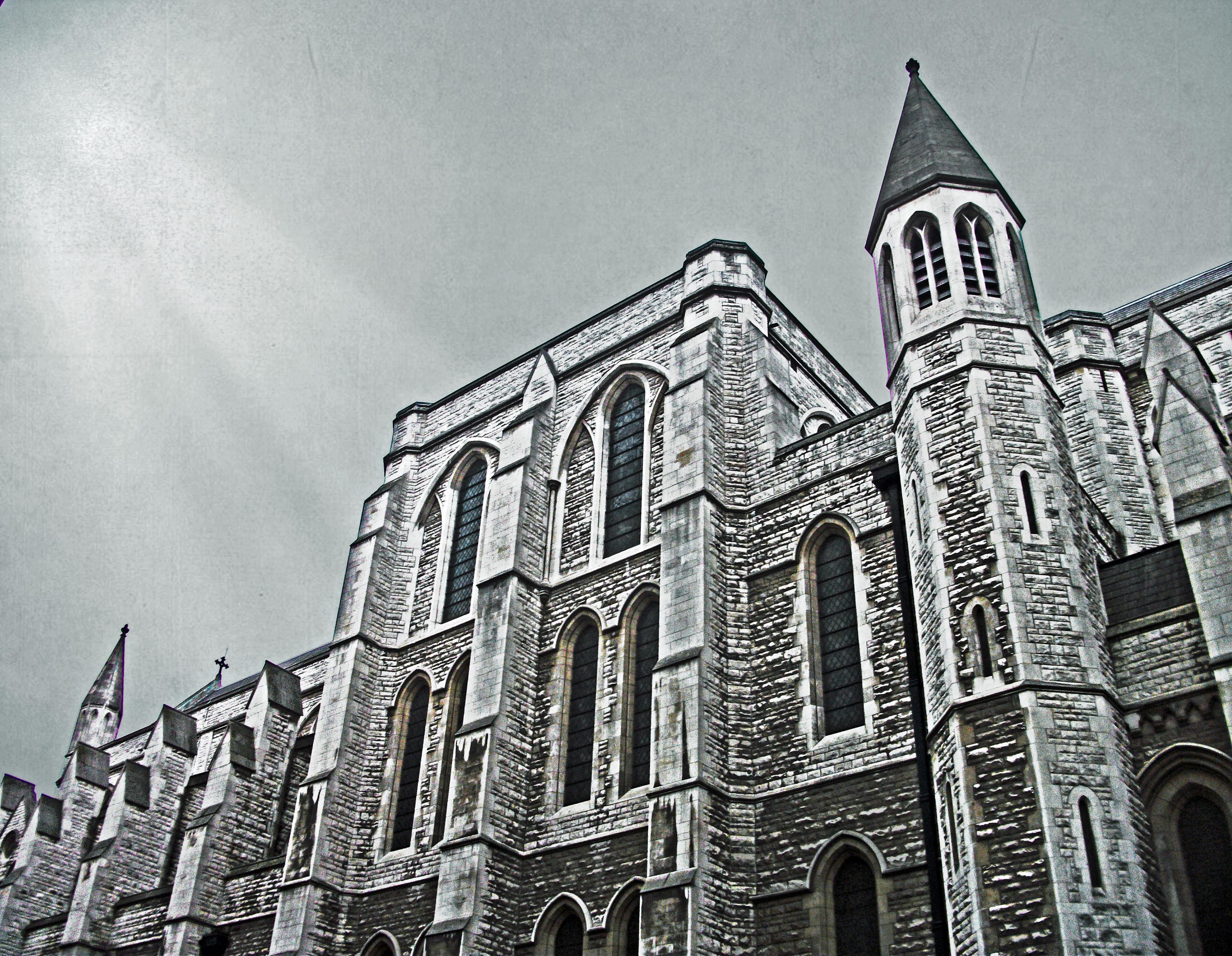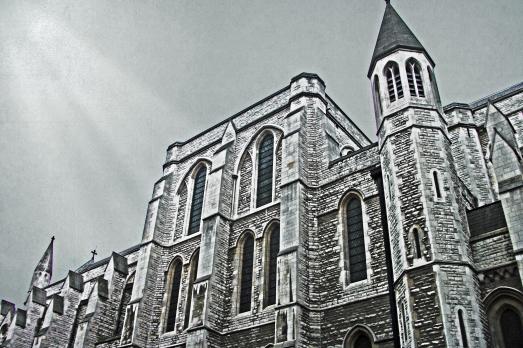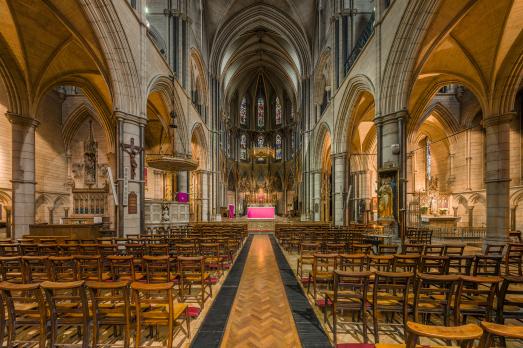Early English Gothic was the prescribed style but the design also drew on French Gothic models. The church was extended westwards during the First World War. Bentley provided furnishings for five chapels and shrines. Situated on a tight site, its height and detailing make the church a local landmark, despite lacking its projected tower and spire.
The mission grew out of the chapel attached to the Spanish embassy. The chapel was built in 1793–96 by Joseph Bonomi on a site in Manchester Square. It was extended in 1846 by Charles Parker. The official connection with the embassy ceased in 1827, when the chapel was handed over to the London Vicariate.
By 1880 the chapel had become too small and the present site was acquired. In an architectural competition, the assessor chose the design by Edward Goldie of Goldie, Child & Goldie, the great-grandson of Joseph Bonomi. His ambitious design was influenced by French Gothic models and Westminster Abbey and managed to fill the broad site by planning double aisles and flush transepts. King Alfonso XII contributed some money for the building works.
The foundation stone was laid on 17 June 1887. The church was opened on 29 September 1890, with the nave left unfinished. Anticipating the acquisition of a piece of adjoining land, the nave was closed at the liturgical west with a temporary brick wall. In 1914–18 Goldie completed the nave by building three additional bays at the west. At the opening ceremony in 1890 the High Mass was sung by the Bishop of Emmaus in the presence of the bishops of Southwark, Northampton and Amycla, the Spanish ambassador and representatives of all the religious orders in London.



